Photographic Printing Techniques: An Ongoing Evolution
The evolution of the types of photographic printing processes is full of innovations that produce better quality photos and are more sustainable for the environment. From the earliest days of photography, where images were captured on fragile glass plates, to the advent of film photography and the rise of digital technology, each stage has contributed to the development of innovative techniques and equipment.
For decades, wet lab printing provided the best quality fine art photography prints. However, the emergence of dry lab printing and high-quality inkjet technology has further revolutionized the field, providing unparalleled precision, vibrant colors, and remarkable detail.
With its improvements in sustainability, technology, and quality, dry labs rival the old-school wet lab process and are poised to dominate the professional photo printing industry
Wet Lab vs. Dry Lab For Photos
Overall, the main difference between wet lab and dry lab photo printing lies in the methodology and tools used. Wet lab printing emphasizes a more traditional methodology using chemical processes, while dry lab printing leverages high-quality inks and digital processing technology.
Both methods have unique characteristics and produce beautiful prints, however, recent developments in dry lab technology have brought significant advantages to the field of fine art photography printing.
ArtisanHD offers a variety of printing options so that you can find something that works for your space as well as five-star customer service and support. Contact us today for a free consultation. support@artisanhd.com
Characteristics Of A Wet Lab For Photography
When you think of traditional wet lab photo development, you may picture a person in a darkroom using tongs to dip photo paper into trays of chemicals and hanging them to dry. These days, machines are used to carry out the process, but the characteristics remain the same.
- Silver halide paper – a light-sensitive photo paper that reveals the image when exposed to the printer light source.
- Chemicals – photos are developed using chemical baths. This includes chemicals for developing, stop baths, fixers, hypo-clearing agents, and wetting agents (photo-flo). Unfortunately, these chemicals can be harmful to the environment and as you can imagine, the list of chemicals used in photo development can be long, including but not limited to:
- Hydroquinone
- Monomethyl para-amino phenol sulfate
- Phenidone
- Acetic acid
- Sodium thiosulfate
- Sodium sulfite
- Sodium metabisulfite
- Sodium dodecylbenzenesulfonate
- Dedicated darkroom – because the photo paper is light sensitive, a darkroom is needed to process the photos.
Characteristics Of A Dry Lab For Photography
The evolution of dry lab technology has been nothing short of remarkable and offers photographers and enthusiasts a world of possibilities to showcase their artistry. The dry lab process is characterized by:
- Photo inks – the image is produced by applying photo inks to the surface of the paper. No chemicals are used in the dry lab printing process.
- Wider color gamut – the expanded color gamut allows for more accurate and vibrant color representation, making images appear more lifelike and captivating.
- Computer-aided photo prep – digital editing techniques using software applications like color calibration technology, allow for a greater degree of control and consistency.
- Integration & efficiency – the dry lab process offers seamless integration between devices allowing for quicker image review, editing, and printing, and ensuring consistency from one print to the next.
Why Choose Dry Lab Over Wet Lab?
While the wet lab process has produced high-quality prints, it has become outdated, and many professional photo printers are making the switch to dry lab photo development for the significant advantages it provides including:
- Better for the environment (uses less energy and requires no water or toxic chemicals)
- Improved color accuracy
- Increased versatility
- Wider color gamut
- Higher resolution
The quality of dry lab prints is clear. In a recent nationwide comparison of photography print lab services, we were thrilled to see ArtisanHD’s dry lab process ranking at the top against some of the best photo labs still offering wet lab prints.
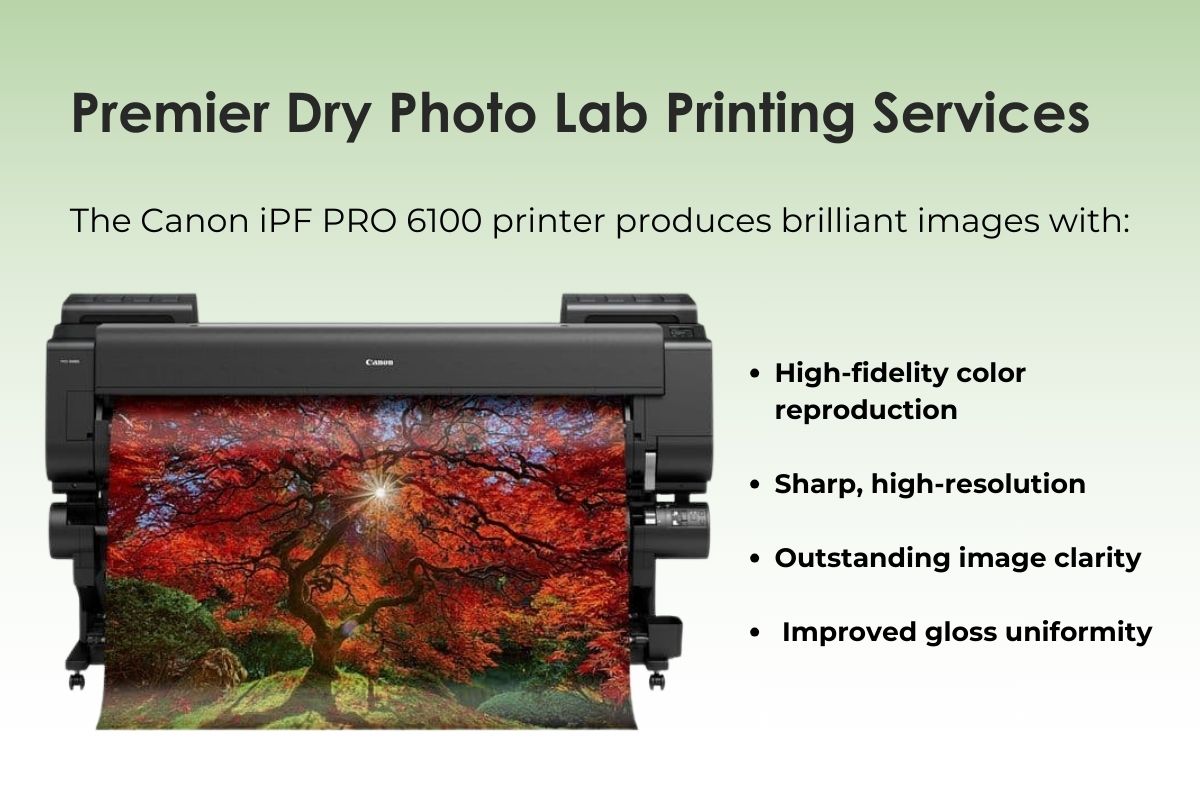
Premier Dry Photo Lab Printing Services
ArtisanHD’s switch to dry lab is part of our continual efforts to provide the highest quality fine art printing and achieve a more sustainable printing process. After discontinuing the environmentally unfriendly wet lab printing process, we replaced it with the latest in dry photo lab print technology– the Canon iPF PRO 6100 printer.
This high-fidelity printer is capable of large 60” output and boasts:
- 2400 x 1200 DPI
- Improved gloss consistency
- Built around LUCIA PRO 11-color ink system
- Auto-calibration technology to keep every print consistent
- Includes Chroma Optimizer to expand the color gamut, enhance deep blacks, and prevent bronzing and gloss differential.
Create a museum-quality masterpiece and join the future of sustainable photographic printing with our premier HD photo papers and dry lab process.
Want to test it out first? Order samples to see the quality for yourself. We’ll even give you $10 in “Loyalty Cash” to use on your next order.

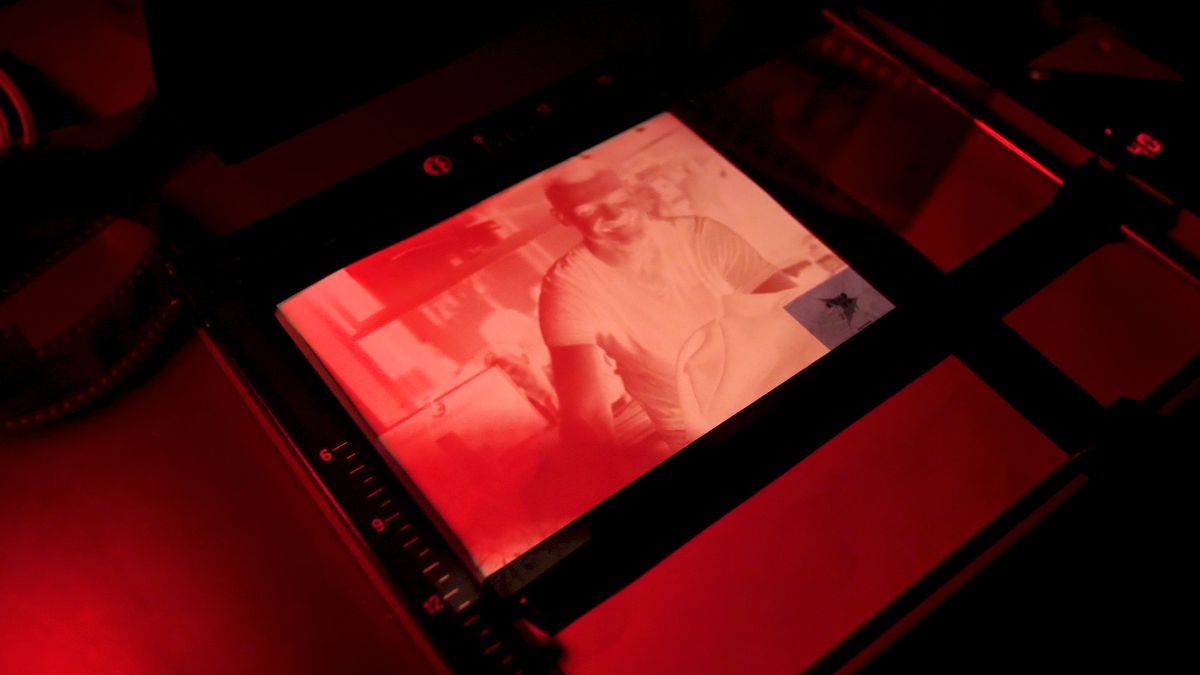

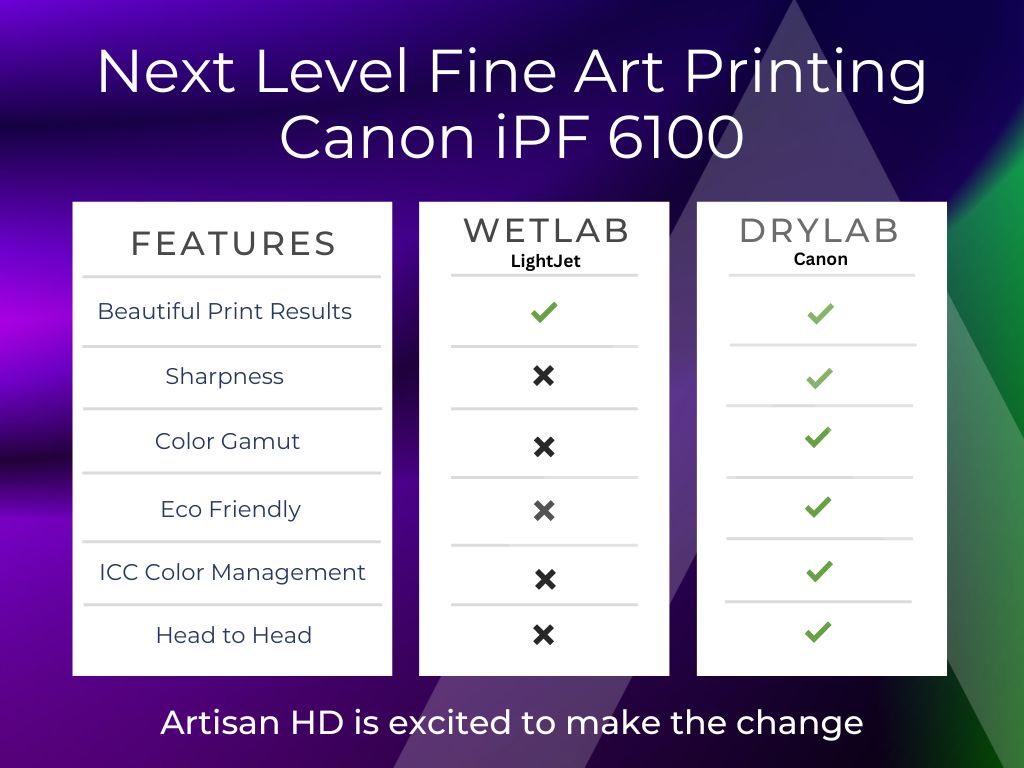


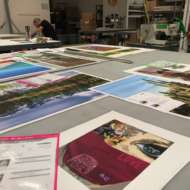

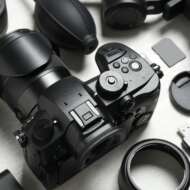


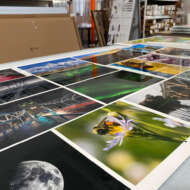

Leave A Comment